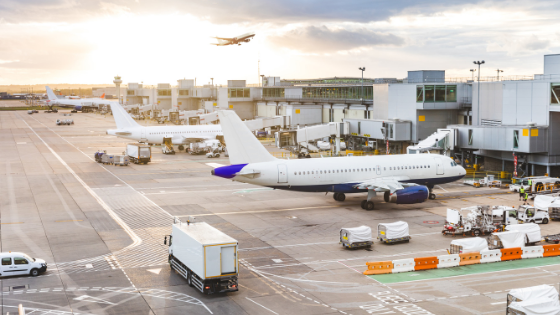It takes an efficient workforce to provide airport safety. Air travel requires a multitude of people, from gate attendants and security personnel to ground crew and beyond, all working together to make sure passengers get to their destinations safely and on time while also preventing any accidents that could put them in harm’s way.
It’s a tough, full-time job to be sure, so here are some important reminders for airport workers on how to stay safe on the job.
Ground Crew Concerns
If there’s one airport job that poses the biggest number of dangers, it’s almost certainly ground crew. Being out on the tarmac for luggage loading, refueling, wing de-icing, and everything else ground crew do on a daily basis come with great safety risk. Combine that with the 24-hour-day cycle of a major airport, ground crew are out there day and night (and often in nasty weather).
That being said, there’s much ground crew can do to protect themselves. A must is providing personal protective equipment (PPE), including ear protection, as jet engines are loud enough to cause permanent hearing loss. Learn more about the importance of a hearing conservation program by reading our article on Hearing Conservation Program and Standards, which includes a free audiogram template.
Ensuring ground crew have protection against temperature extremes is also crucial. Finally, management needs to conduct regular safety checks and follow hazard and risk assessment steps to ensure working conditions are as safe as possible for ground crew.
Gate and Ramp Safety
Airline workers who provide service at the gate and help passengers board via ramp face their own safety concerns. Many of these revolve around being able to fulfill passenger needs safely, especially when it comes to passengers with mobility issues due to disabilities. These issues are often highly sensitive and require stringent and comprehensive safety training to ensure airport safety standards are kept.
On a more technical level, boarding ramp safety also requires high levels of attention from management, especially since there are so many things that can go wrong. From extending the ramp properly to ensuring planes come to a stop in the correct position to allow passengers to board, all personnel needs to be acutely aware of all facets of the entire procedure.
Safety and Security
Today, modern airport safety also needs to encompass security. Providing a safe and secure environment for travelers and workers alike means being aware of the dangers faced by the post-9/11 travel landscape. These new security protocols have been put in place for a reason, and complying with those protocols at all times is integral to remaining safe on the job.
This includes not just approaches to preventing traditional security threats but also possible illness and disease vectors. With countless people coming in and out of any airport on a daily basis, illness can spread rapidly unless an emphasis is placed on cleanliness. An example of this would be the need for custodial workers to be diligent in cleaning and disinfecting bathrooms regularly or food court employees adhering to food handling and sanitation guidelines.
Working Together Towards Overall Airport Safety
With even a modestly-sized airport a small city unto itself, airport safety requires an entire cadre of workers to pull off. Management’s job is to organize their workforce, mobilizing them to work together to make the travel experience safe for passengers and also provide a safe working environment for everyone who’s in the business of moving both people and their luggage from one place to another.
